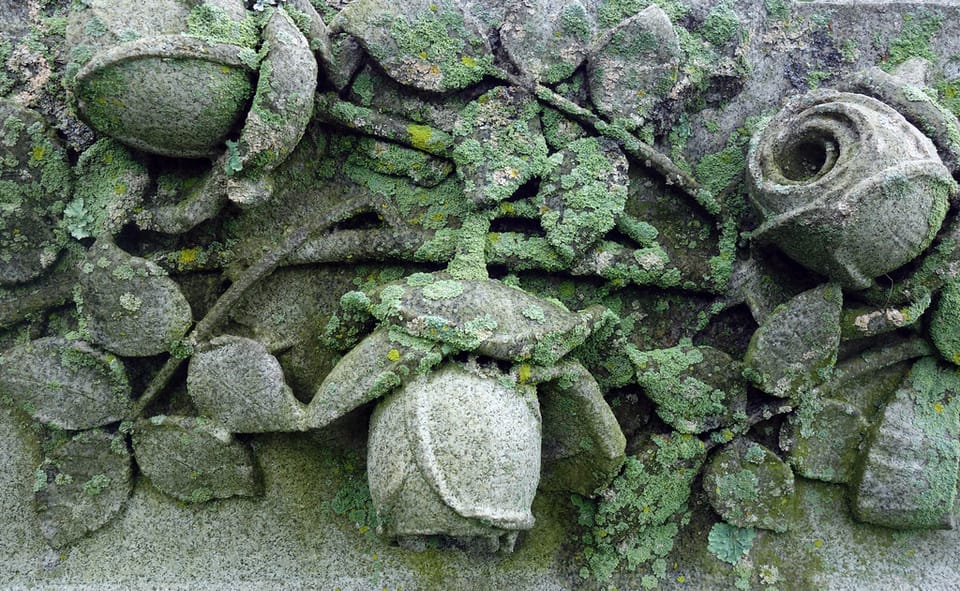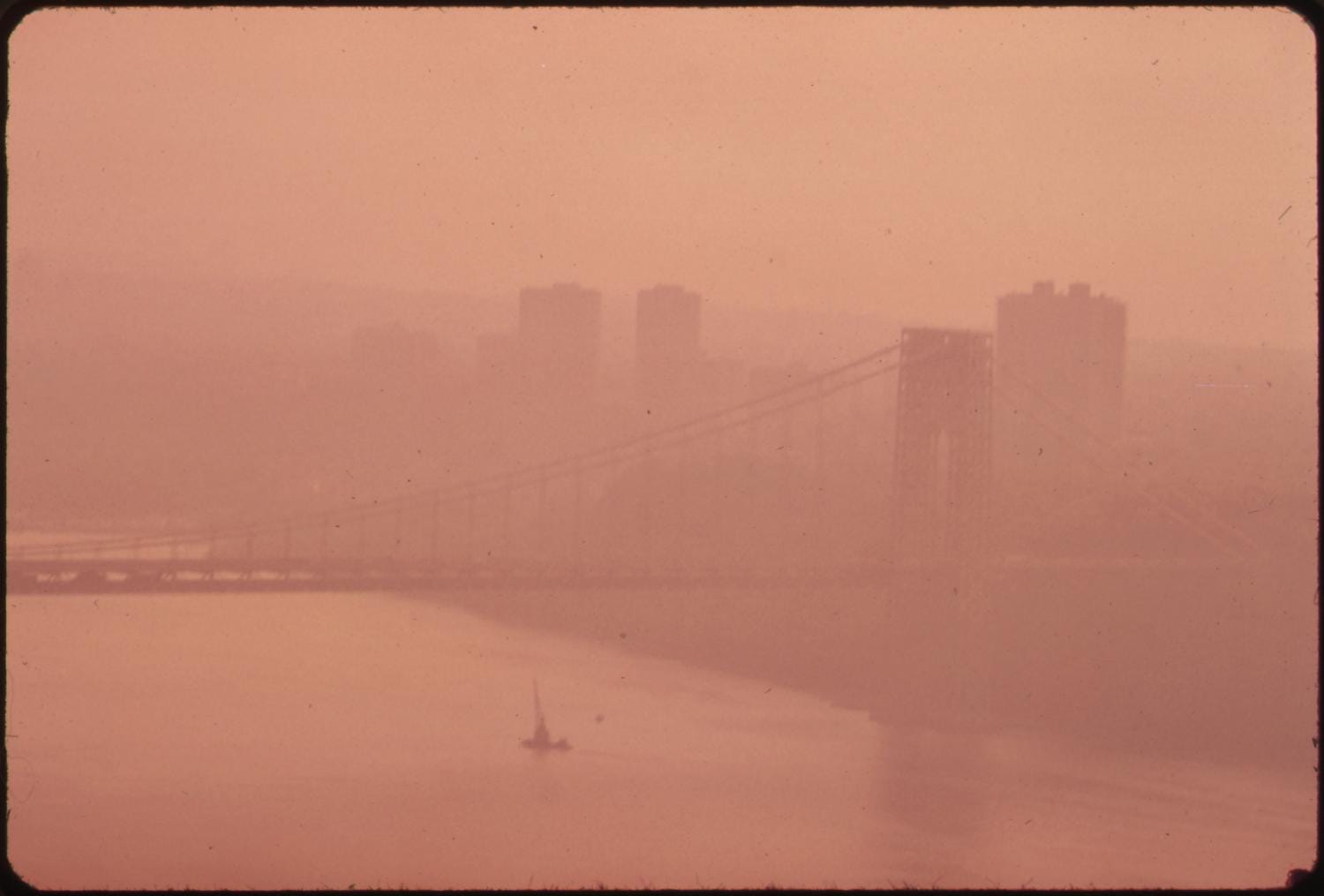Lichens Share Our Urban Air

In this spring season of regular rain mixed with rejuvenating days of sun, the lichens that live in the city year-round are especially noticeable with their brightened colors. You can find them everywhere, from bodega awnings and granite cornerstones of buildings to tree trunks and outcrops from the city’s bedrock. But 50 years ago, there was hardly a lichen to be found in New York City.
What changed was the Clean Air Act of 1970, which helped to improve the quality of the city’s air. Lichen species number in the thousands and are on every continent (even Antarctica), but because they don’t have roots, they cannot filter all the nutrients from the atmosphere that they absorb to survive. This makes them particularly susceptible to air pollution, and in an urban environment where once abundant natural surfaces are scarce, the decline of air quality can further push their numbers to near oblivion.
But now the lichens are back in diverse shapes and hues, from the sunny yellow of the candleflame lichen to the luminous shades of the golden moonglow lichen. You can become an amateur lichen observer by identifying their three main types: foliose which look like leaves spreading over a surface, fruticose which appear as miniature shrubs, and crustose which are totally flat. Lichens are actually not one but two life forms working together, with algae or cyanobacteria finding a home among various fungi. Because they produce all their own food through the photosynthesis of the algae or cyanobacteria, they don’t need to use resources from the rock, bark, or park bench wood they are only lightly attached to.
So while some people might see a lichen-covered lamppost or tombstone in one of our many sprawling cemeteries as evidence of neglect, these are signs of survival. The more lichens you see, the more breathable the air is around you. These symbiotic organisms offer shelter for insects—the lacewing larva will sometimes use bits of lichens as camouflage, for instance—and food for animals like squirrels and slugs. Look closely at their forms, and you will discover a whole tiny world of life regaining ground inch by inch after decades of obliteration. If the lichens are struggling, so are we, and seeing them grow is a reminder that our choices about how we care for our environment matter.

- The smog in New York City became catastrophic from November 23 to 26, 1966, causing an estimated 10% of the city’s population to have health issues ranging from respiratory distress to death. It was a disastrous day in years of bad air. A March 12, 1970, article in the New York Times quoted a city medical examiner: “On the autopsy table it’s unmistakable. The person who spent his life in the Adirondacks has nice pink lungs. The city dweller’s are black as coal.”
- Lichens are an especially sensitive example of an air pollution bioindicator, an organism that can indicate the state of an environment. Another local bioindicator is the pigeon, as it lives in our built environments and experiences the same environmental pollution. A 2016 study published in Chemosphere examined New York’s feral pigeons as lead bioindicators, noting that “the pigeon’s relatively long lifespan and hardiness, combined with its close relationship to humans, make it a suitable bioindicator, offering up the potential to gauge adverse environmental conditions that may affect humans and other wildlife.”
- The New York Botanical Garden (NYBG) has the largest lichen herbarium in the Western Hemisphere, with around 285,000 specimens. NYBG scientists also study lichens across the globe, and in 2015, they identified a new species found on the North Carolina-Tennessee border that they named for a local music legend: Japewiella dollypartoniana.